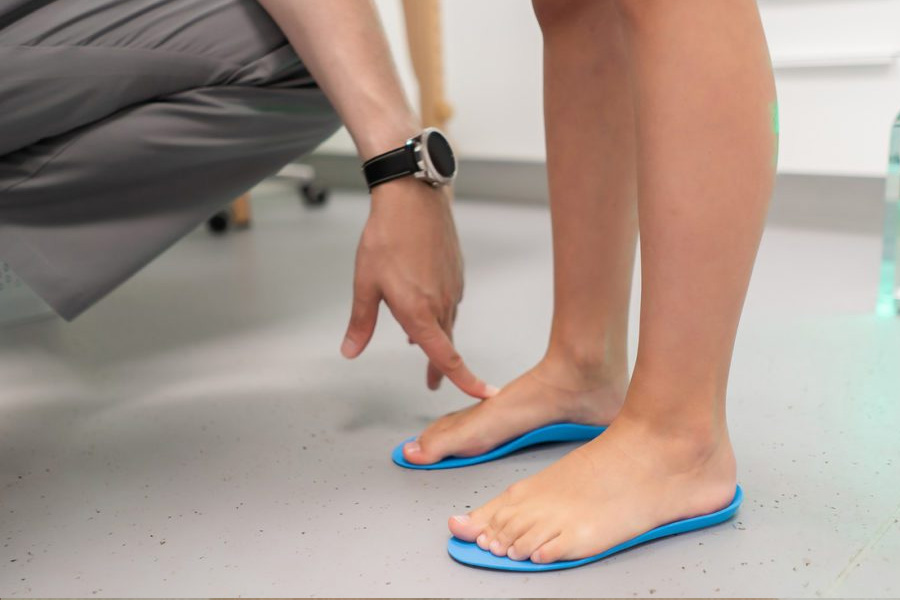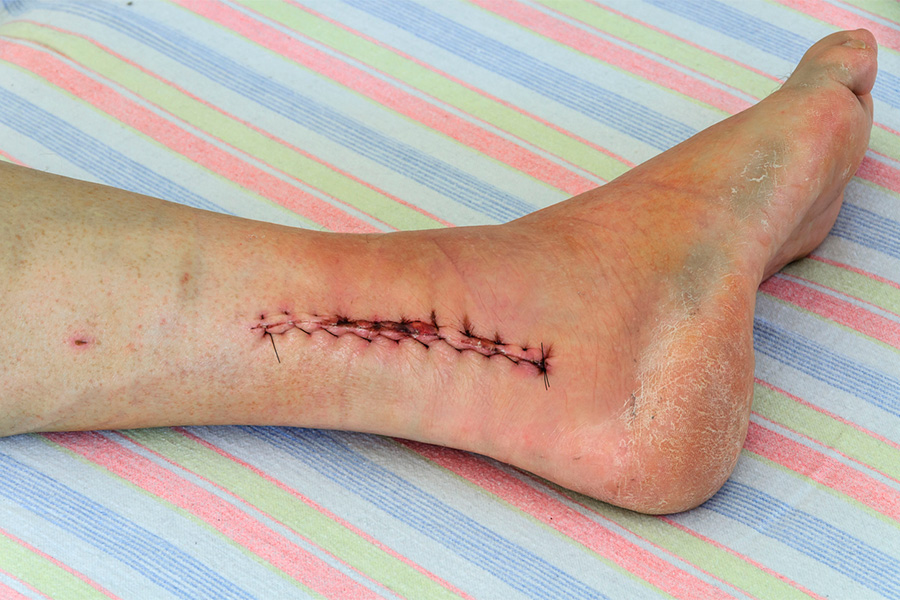What is Plantar Fasciitis?
There is a long, thick band of connective tissue that runs along the bottom of the foot – from the heel to the toes, connecting them together – called the plantar fascia. When this tough fibrous tissue becomes irritated, the resulting plantar fasciitis tends to cause heel pain.
The main sign of this condition is when you take the first step out of bed in the morning and you suddenly feel a sharp stabbing pain in the heel. This pain usually lasts for a few minutes before lessening to a dull ache.
With movement, the pain usually decreases. However, when you’ve been sitting for a prolonged period of time and then you stand up and walk, the terrible pain returns immediately. Even while exercising, the pain may abate for a while, only to return in full force afterward.

Causes of Plantar Fasciitis
Normally the plantar fascia acts as a shock absorber, reducing the impact or strain along the bottom of the foot. If the tension or stress placed on the plantar fascia is too great, small tears can appear. These tears can cause irritation and inflammation – and further repetitive use or stretching will just compound the issue.
Risk Factors of Foot Pain
Many factors play a role in developing plantar fasciitis, including:
- Age (ages 40 to 60)
- Distance-running
- Jumping activities
- Ballet dancing
- Aerobics
- Obesity
- Professions that require a lot of standing and walking
All types of activities that place added stress on the foot – especially high-impact stress – will affect the heel and can result in early-onset plantar fasciitis.
Jobs where a person must stand or walk without a break for hours on end – such as teachers, factory workers, bartenders, and restaurant workers – all have a greater chance of developing plantar fasciitis.
Ignoring the pain and warning signs can result in chronic heel pain that negatively affects regular activities and job performance. It can even cause permanent damage to the feet and legs, as you may naturally try to avoid putting pressure on the heel. Doing so can actually create problems in other areas of the body that are absorbing the pressure, such as the knee, hip, and even the back.
Diagnosis of This Condition
Diagnosing plantar fasciitis is fairly straightforward for a physician. The doctor will ask you a few questions, perform a brief physical exam, and possibly order an X-ray or MRI to rule out other potential problems.
Although these scans may reveal a bone spur in the heel, removing the spur tends to do more harm than good; the pain is likely being caused by the inflammation of the fascia, not by the spur. Many people who have had bone spurs removed found that it did little or nothing to lessen their pain.
Treating Plantar Fasciitis
The RICE method – rest, ice, compression, and elevation – and over-the-counter pain-relief medications are usually recommended first. If these conservative measures do not cause any improvement, the doctor may recommend physical therapy with a special focus on stretching the plantar fascia, the Achilles tendon, and the lower leg muscles.
The therapist may recommend taping the foot daily for added support. They might even recommend the use of night braces. If it is still causing problems, check out special orthotics with custom-fitted arch supports to help distribute the pressure more evenly on the feet.
Foot Doctors in Cincinnati
If you have inexplicable heel pain, it could be plantar fasciitis. Contact the professionals at Cincinnati Foot & Ankle Care for a full medical evaluation of your feet.
Call us at your most convenient location across the Cincinnati area, or fill out our appointment request form online now. Take your last painful step and look forward to a new tomorrow.





